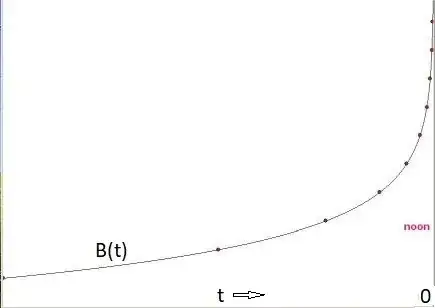One may worry about many things, for instance, some people are worried about the world around us being "real" (rather than some giant computer simulation). On the practical side of the issue, I would say that one should worry about things (dealing with relation of our math and the world around us) that are more concrete, like "are bridges that are build using our math models stable?", "do our our weather (or climate) models work?", etc. Once you think this way, then you realize that neither one of these things are affected by the "discrete/continuous" dichotomy. For instance, weather predictions are based on combinations of (a) differential equations (which one normally puts in the "continuous" box), (b) linear algebra (where does it belong, is a separate matter, see below) and (c) computers (since 1940s they decidedly belong to "discrete", but, say, before WWW2, they were primarily analog, hence "continuous"). Accuracy (or rather lack of thereof) of our weather/climate predictions primarily depends on the following: (a) our PDEs are admittedly insufficient and (b) unstable, which implies that linear algebra approximations are admittedly insufficient to accurately approximate solutions of the differential equations.
Now, to the dichotomy (continuous/discrete) itself: Once you think about it for about 10 minutes, you realize that it is simply bogus. Consider linear algebra (something that I think you are familiar with). Does it belong to "discrete" or "continuous"? If you think in terms of finite difference methods for solving PDEs, then your first reaction would be "of course discrete". But, in reality, it is not. Linear algebra that one uses for approximate solutions of PDEs depends critically on real numbers that those, belong to "continuous". So, the correct answer would be "none of the above".
Next, most people (I think, you are included) when they say "continuous" really mean something like "real-analytic functions on some domains in $R^n$" or just domains in $R^n$ with real-analytic boundary (as domains for such functions. (OK, maybe piecewise real-analytic.) After all, this is what shows up in most PDEs motivated by mathematical physics (at least, say, pre-20th century and that's all what a non-nuclear engineer would need). However, the rational numbers (already mentioned in Daniel's answer) do not belong to this box and neither they belong to "discrete" box. To make things worse, there are natural continuous concepts such as Brownian motions and fractals, which again belong to "none of the above" box. Neither classical PDEs that you are familiar with (dealing with infinitely differentiable coefficients of PDEs and solutions) nor discrete (say, finite) math, provides a good tool for dealing with such things. Furthermore, there is a serious circumstantial evidence that our world (to the extent we understand it) is fractal on both microscopic (quantum mechanical) and macroscopic (clusters of galaxies) scale.
As for an "isomorphism" between "discrete" and "continuous", just forget it. In some very special cases one can assign some meaning to it (like "piecewise-linear approximations to solutions of some PDEs converge to actual solutions"), but not in general. (And, just to repeat myself, much of the math belongs to "none of the above".)
In conclusion, mathematics develops (in part, but only in part) in response to complexities of the outside world. So far, our experience tells us that different types of problems are best handled by different math tools ("continuous", "discrete", or "none of the above"). So far, if you want to build stable bridges, you use a combination of smooth PDEs and linear algebra. To study, say, stock market, you use stochastic PDEs ("none of the above"). And so it goes.


